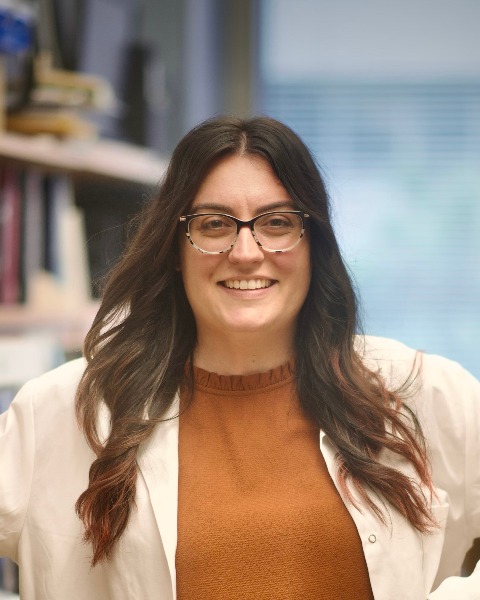Biomaterials
(C-83) Minimizing natural polymer bioink diffusion during embedded 3D bioprinting process for spinal cord tissue mimics
- AM
Alejandro Machado (he/him/his)
Undergraduate Researcher
University of Florida
Gainesville, Florida, United States - AL
Adonis Lysandrou II
Undergraduate Researcher
University of Florida, United States 
Eleana Manousiouthakis, PhD (she/her/hers)
Postdoctoral Associate
University of Florida
Gainesville, Florida, United States- VS
Vignesh Subramaniam
Graduate Research Assistant
University of Florida, United States - SK
Shruti Kolli
Undergraduate Researcher
University of Florida, United States - AE
Ashley Evering
Undergraduate Researcher
University of Florida, United States - TA
Thomas E. Angelini
Associate Professor
University of Florida, Mechanical and Aerospace Engineering, United States - CS
Christine Schmidt
Professor
University of Florida, United States
Presenting Author(s)
Co-Author(s)
Primary Investigator(s)
As of 2022, in the United States, spinal cord injury (SCI) was estimated to affect about 302,000 people. There is a need to develop testing platforms that accurately mimic the cellular environment in SCI so that appropriate treatments can be developed. Hydrogels provide a promising platform to study the interactions of the extracellular matrix (ECM) and neural growth.
Embedded 3D printing uses a liquid-like solid printing material that can transition between solid and fluid conditions when a shear force is applied. When printing 3D in vitro models using methacrylated hyaluronic acid (HA) as our bioink, the combination of a polyethylene glycol (PEG) microbead support bath and mechanically tunable ECM mimics proves to be an ideal bioprinting platform.
Objective: The overall objective is to prevent diffusion of HA in 3D printed in vitro models. The objective of this individual project is to assess the variability of HA bioink resolution over time.
Materials and Methods::
Bioinks were created utilizing mechanically tunable glycidyl methacrylate-hyaluronic acid (GMHA) at 10 mg/mL, with or without collagen I at 3 mg/mL. Testing was performed in a packed bath of granular microgels, composed of polyethylene glycol.
Biomaterial testing was done by printing 4 lines of HA into 5.8% w/w PEG microgel solution and analyzing line thickness over time. A 250uL glass syringe with a 30-gauge needle was loaded with HA and attached to the printer. Custom Matlab code was used to create each line at a length of 10mm and thickness of 400um. Each line started printing approximately 1 minute after the previous line. After each line was printed, the needle was lifted out of the PEG microgel and moved over 3mm. After the prints were done, the plate was photopolymerized under UV light for 10 minutes to photocrosslink the GMHA and then incubated overnight at 37°C. Lines were imaged with a Nikon Eclipse Ti confocal microscope.
For analysis, ImageJ was used to generate an average intensity of the z-stack. For each averaged image, a region of interest was selected at 25%, 50%, and 75% perpendicular to the length of the line starting from the top. The mean gray value of each line was plotted against the x-value position in the image. Each plot was then analyzed to calculate the thickness of the printed lines from the ~3-minute line to the 0-minute line. The line thickness of each line was plotted against the length of time before crosslinking.
Results, Conclusions, and Discussions::
Our results showed a high variability of line thickness over time. The images show some consistency in the time 0 line (Figure 1A), but upon viewing the ~3-minute images you can see high variability in the staying power of the line. As seen in Figure 1B, run 1 and run 2 showed a decrease in line thickness as time went on. Run 3 showed an increase in line thickness over time. The ~3-minute line was expected to have the largest thickness due to it being crosslinked immediately after printing with the 0-minute line having the smallest thickness.
Because full testbeds require longer extrusion print path times, a consistent line thickness across time would be ideal for the bioink. Our data proves that, for this reason, GMHA needs to be augmented for this 3D in vitro testbed application since its resolution was inconsistent over time.
Acknowledgements (Optional): :
References (Optional): :
